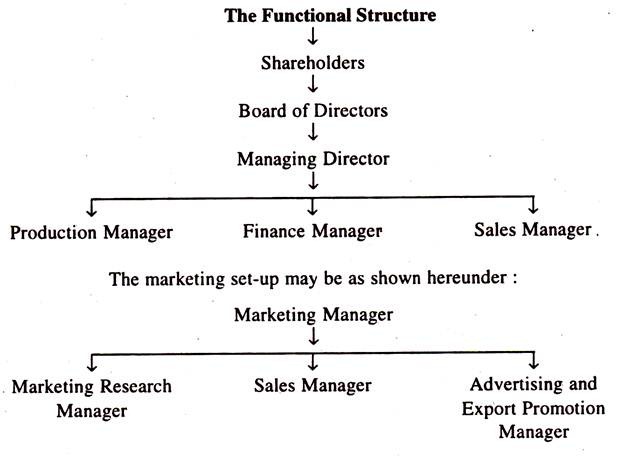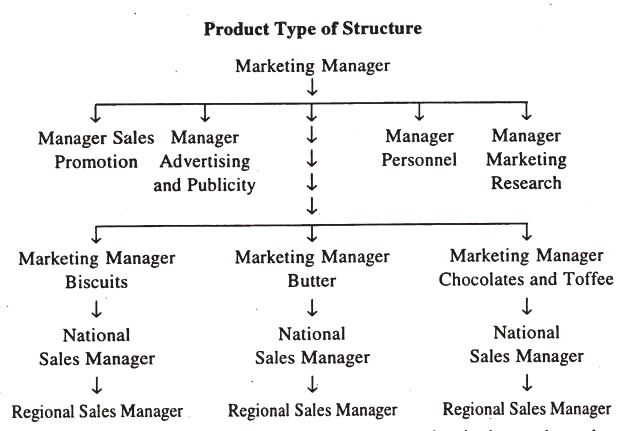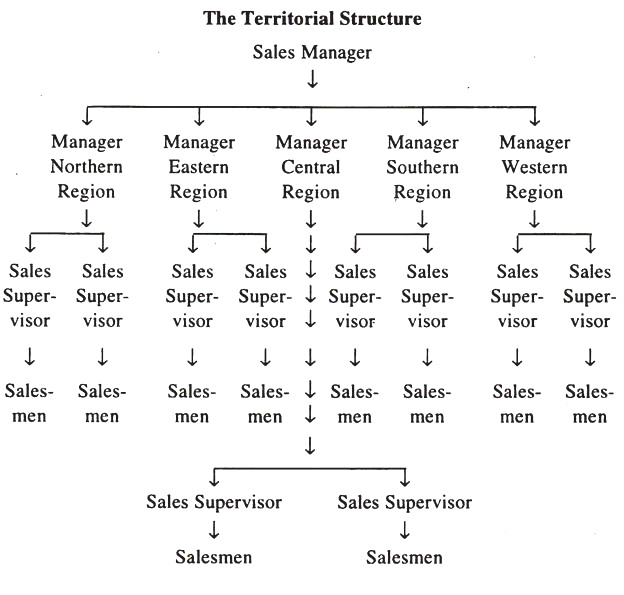The important methods of grouping activities into departments may be summed up as follows: 1. By Enterprise Functions 2. Departmentalisation by Products 3. Departmentation by Customers or Markets 4. Departmentalisation by Territory 5. Departmentation by Process.
Method # 1. By Enterprise Functions:
The most simple and common type of organisation consists of grouping of all similar activities of the business into major departments or divisions under an executive who reports to the chief executive as is shown in the diagram.
Functional classification is the usual choice of small enterprises for creating major departments.
The important advantages of functional classification include occupational specialisation, faculty of inter-departmental co-ordination, economy of operation and the adoption of a logical and comprehensible structure.
Functional specialisation and division of labour promote excellence in performance in specialised areas because of development of expertise through groovy experience.
It is a simple form of grouping activities for mono-product organisations upto a certain size. For some large organisations also, functional specialisation enables reaping of economies of scale. If accounting is centralised, fewer chartered accountants will be needed than if each production unit has its own accounting department.
Disadvantages of Functional Type:
More often than not, it leads to excessive centralisation, delay in decision-making, poor inter-departmental co-ordination and ineffective control of work performances.
Again, it is difficult to set up specific accountability and profit centres within functional departments, with the result that performance cannot be, accurately measured.
This method is detrimental to overall organisational strength and survival. It is a hindrance to the development of men within an overall view of the firm and its problems.
Method # 2. Departmentalisation by Products:
The grouping of activities on the basis of products or product families becomes feasible when organisations grow into multi-product enterprises having extensive markets.
All functions related to particular products are brought together under the direction of a semi-autonomous product manager, who is delegated with operating authority by the top management.
The chart presents following picture in this respect:
The main advantage of this kind of departmentation is that each product division could be considered as a viable profit centre for accountability purposes. The performance of individual products can be easily assessed to differentiate between profitable and unprofitable products.
Again, production market oriented long range development strategy can also be marked out with better confidence. In the end, top management is free of operating task responsibility and can concentrate on such centralised activities like finance, planning research and development.
Classification by product permits to make a maximum use of specialisation in technical skill, managerial knowledge and the capital equipments.
Because of the highest extent of decentralisation, product division encourage initiative, responsibility and efficiency on the part of the subordinates. The only defect that it increases management cost, duplicate service functions are needed both at top and operating levels of management.
High cost of operation prevents the small and medium-sized firms from taking this basis of classification, specially for creating major units,
Method # 3. Departmentation by Customers or Markets:
This kind of classification is taken by concerns engaged in specialised services to give individual attention to the diverse groups of buyers in the market, sales activities are, often split into several parts.
When the products are offered to an extensive market through numerous channels and outlets, it has the special merit of supplying goods in accordance with the peculiar needs of customers, sales being the exclusive field of its application may appear difficult between sales function and other enterprise functions.
Specialised sales staff may become idle with the downward movement in sales figures in respect of any particular group of customers.
Method # 4. Departmentalisation by Territory:
Here the market area is broken up into sales territories and a responsible executive put in charge of each territory.
The territory may be known as district, division of region. The field salesmen under the respective regions are responsible to their corresponding sales supervisors if any, who are responsible to their respective regional managers.
This is shown in the chart given below:
It has the same advantages and disadvantages as are to be found in the case of classification by product.
However, there are two special advantages of its own:
(i) Being nearer to the market and becoming familiar with local conditions, the classification help to cater to the needs of local people, satisfactorily.
(ii) Further, economy in transport cost and favourable raw material prices may make a significant contribution towards the lower cost of production.
Method # 5. Departmentation by Process:
The manufacturing activities may be classified on the basis of their process of production. Similar machines are grouped into separate sections that are used for a distinct operation of job.
Cost and economy consideration urge the use of electronic office equipments and other costly machines on the basis of this classification. However, it is not a suitable method to be used in any mass production arrangement.
In real practice, no single method of grouping activities is used throughout the concern structure with all its levels. Different basis are used in different segments of the concern.
Composite or Hybrid Method:
It is the common basis for classifying activities. Once the major division have been made with the help of concern functions, product territories, sub-division can be done by anyone of these methods given above.
In fact, sale activities, are, frequently grouped on one basis while manufacturing and other activities are divided on different basis.


